1. Overview of Intelligent Solutions for Industrial Robots
With the deepening of Industry 4.0, the intelligence of industrial robots has become a core driving force for the transformation and upgrading of modern manufacturing. The intelligent solutions for industrial robots aim to enhance the robots’ autonomous decision-making, environmental perception, and collaboration capabilities by integrating advanced technologies such as artificial intelligence, the Internet of Things, big data, and cloud computing, thereby achieving flexibility, efficiency, and intelligence in the production process. This solution not only significantly improves production efficiency but also reduces labor costs, enhances product quality, and provides enterprises with stronger market competitiveness.
The core technologies of intelligent solutions for industrial robots include the following aspects:
-
Perception and Recognition Technology: Through visual sensors, force sensors, laser radars, and other devices, robots can perceive the surrounding environment in real-time, recognizing workpieces, obstacles, and operational objects. For example, the vision system can achieve high-precision workpiece positioning and defect detection, while force sensors can achieve precise force control, suitable for fine operations such as assembly and polishing.
-
Autonomous Decision-Making and Path Planning: Based on artificial intelligence algorithms, robots can autonomously plan the optimal path according to task requirements and adjust in real-time in dynamic environments. For instance, in warehousing and logistics scenarios, robots can achieve autonomous navigation through SLAM (Simultaneous Localization and Mapping) technology, avoiding dynamic obstacles and efficiently completing cargo handling tasks.
-
Human-Robot Collaboration and Safety Control: Through collaborative robot technology, industrial robots can safely share the workspace with human workers. The safety control system includes force feedback, collision detection, and emergency stop functions, ensuring that robots can immediately stop working in emergencies to avoid harm to personnel or equipment.
-
Data-Driven and Predictive Maintenance: Through IoT technology, industrial robots can collect operational data in real-time and predict potential failures through big data analysis, allowing for maintenance to be performed in advance and reducing downtime. For example, by analyzing vibration and temperature data of key components such as motors and reducers, their lifespan can be predicted, and maintenance plans can be formulated.
-
Cloud Collaboration and Remote Control: Based on cloud computing platforms, industrial robots can achieve remote monitoring, debugging, and upgrades. Enterprises can manage multiple robots through the cloud, optimizing resource allocation and achieving cross-regional collaborative operations.
The application scenarios of intelligent solutions for industrial robots are extensive, covering various fields such as automotive manufacturing, electronic assembly, logistics warehousing, and food processing. For example, in automotive manufacturing, intelligent robots can perform high-precision tasks such as body welding, painting, and assembly; in electronic assembly, robots can achieve fast and precise assembly of small components; in logistics warehousing, robots can automatically sort, handle, and stack goods.
By implementing intelligent solutions for industrial robots, enterprises can achieve the following core values:
- Enhancing Production Efficiency: Intelligent robots can work continuously 24 hours a day, significantly improving production rhythm and capacity.
- Reducing Operating Costs: Reducing reliance on labor lowers labor costs, while predictive maintenance reduces equipment repair expenses.
- Improving Product Quality: Through high-precision operations and real-time monitoring, human errors are minimized, enhancing product consistency.
- Increasing Production Flexibility: Intelligent robots can quickly adapt to different product production requirements, supporting small-batch, multi-variety production modes.
- Enhancing Safety: Through collaborative technology and safety control systems, workplace injuries are reduced, ensuring worker safety.
In summary, intelligent solutions for industrial robots are an important engine driving the digital transformation of the manufacturing industry. Through technological integration and application innovation, enterprises can achieve intelligent upgrades in production processes, enhance core competitiveness, and lay a solid foundation for future development.
1.1 Definition of Intelligent Industrial Robots
Intelligent industrial robots refer to highly efficient industrial devices that integrate advanced artificial intelligence, machine learning, sensor technology, and automation control systems, enabling them to possess autonomous perception, decision-making, and execution capabilities. These robots can complete complex production tasks without human intervention and continuously optimize their operational strategies during the process. The core features of intelligent industrial robots include:
- Autonomous Perception Capability: By using high-precision sensors (such as visual sensors, force sensors, laser radars, etc.), they can obtain environmental information in real-time, recognizing the position, shape, and state of workpieces to ensure the accuracy and reliability of operations.
- Intelligent Decision-Making Capability: Based on machine learning and deep learning algorithms, robots can analyze historical data and real-time information, autonomously plan optimal paths, adjust operational parameters, and respond to emergencies.
- Adaptive Execution Capability: Through closed-loop control systems, robots can dynamically adjust their actions based on environmental changes and task requirements, achieving high-precision and high-efficiency operations.
- Collaborative Working Capability: Intelligent industrial robots can seamlessly collaborate with other robots or human operators, enhancing overall production efficiency through communication protocols and shared data.
The application scenarios of intelligent industrial robots cover multiple fields in manufacturing, including but not limited to:
- Assembly and Welding: By using visual recognition and force feedback technology, robots can accurately complete complex assembly and welding tasks.
- Material Handling and Sorting: Utilizing path planning and object recognition technology, robots can efficiently handle material transportation and sorting tasks.
- Quality Inspection and Monitoring: Based on image processing and data analysis, robots can detect product defects in real-time and generate quality reports.
- Flexible Production Lines: Intelligent robots can quickly adapt to changes in production lines, supporting multi-variety and small-batch production modes.
In terms of technical implementation, the development of intelligent industrial robots needs to focus on the following key components:
- Sensor Module: Integrating various sensors to obtain multi-dimensional environmental data.
- Data Processing Unit: Using high-performance computing platforms (such as GPUs or TPUs) for real-time data analysis and processing.
- Control Algorithms: Developing robust control algorithms to ensure stable operation of robots in complex environments.
- Communication Interfaces: Supporting industrial standard protocols (such as EtherCAT, PROFINET) to achieve interconnectivity between devices.
Through the comprehensive application of the above technologies, intelligent industrial robots can not only significantly enhance production efficiency but also reduce labor costs, increase the flexibility and reliability of production lines, and provide strong support for the digital transformation of the manufacturing industry.
1.2 Development Trends of Intelligent Industrial Robots
With the deepening of Industry 4.0 and smart manufacturing, intelligent industrial robots are evolving towards higher precision, greater autonomy, and broader application fields. Firstly, in terms of perception and decision-making capabilities, industrial robots are gradually integrating multi-modal sensors, such as vision, force, and touch, to achieve precise perception and real-time response in complex environments. For example, through deep learning algorithms, robots can recognize workpieces of different shapes, colors, and textures, autonomously adjusting their grasping strategies to enhance production efficiency and product quality. Secondly, the rise of collaborative robots (Cobots) marks the transition of industrial robots from closed operations to human-robot collaboration. Collaborative robots are characterized by safety, flexibility, and ease of deployment, enabling them to work alongside human workers in tasks such as assembly and inspection, especially suitable for small-batch and multi-variety production scenarios.
In terms of communication and interconnectivity, the application of 5G technology provides industrial robots with low-latency and high-bandwidth communication capabilities, supporting collaborative operations of large-scale robot groups. For instance, in smart factories, multiple robots can achieve data sharing and task allocation through industrial internet platforms, forming an efficient production network. Additionally, the combination of edge computing and cloud computing technologies allows robots to process massive amounts of data in real-time, optimizing motion trajectories and operational processes, further reducing costs and improving efficiency.
Intelligent industrial robots also exhibit significant trends in the following areas:
- Modular Design: Through standardized interfaces and modular components, robots can quickly adapt to different task requirements, reducing maintenance and upgrade costs.
- Adaptive Control: Based on reinforcement learning and model predictive control (MPC) technologies, robots can autonomously optimize motion parameters in dynamic environments, adapting to complex working conditions.
- Green Energy Efficiency: Utilizing efficient motors and energy recovery technologies to reduce energy consumption, aligning with sustainable development requirements.
The following table summarizes the key technologies of intelligent industrial robots and their application scenarios:
| Technology | Application Scenarios | Advantages |
|---|---|---|
| Multi-Modal Perception | Grasping and assembly in complex environments | Improved precision and adaptability |
| Deep Learning Algorithms | Workpiece recognition and classification | Enhanced automation level |
| 5G Communication | Collaborative operations of large-scale robot groups | Efficient data interaction |
| Edge Computing | Real-time data processing and optimization | Reduced latency and improved response speed |
| Modular Design | Quick task switching and upgrades | Lower maintenance costs and increased flexibility |
The following are screenshots of the original proposal; you can join the knowledge community to access the complete document.
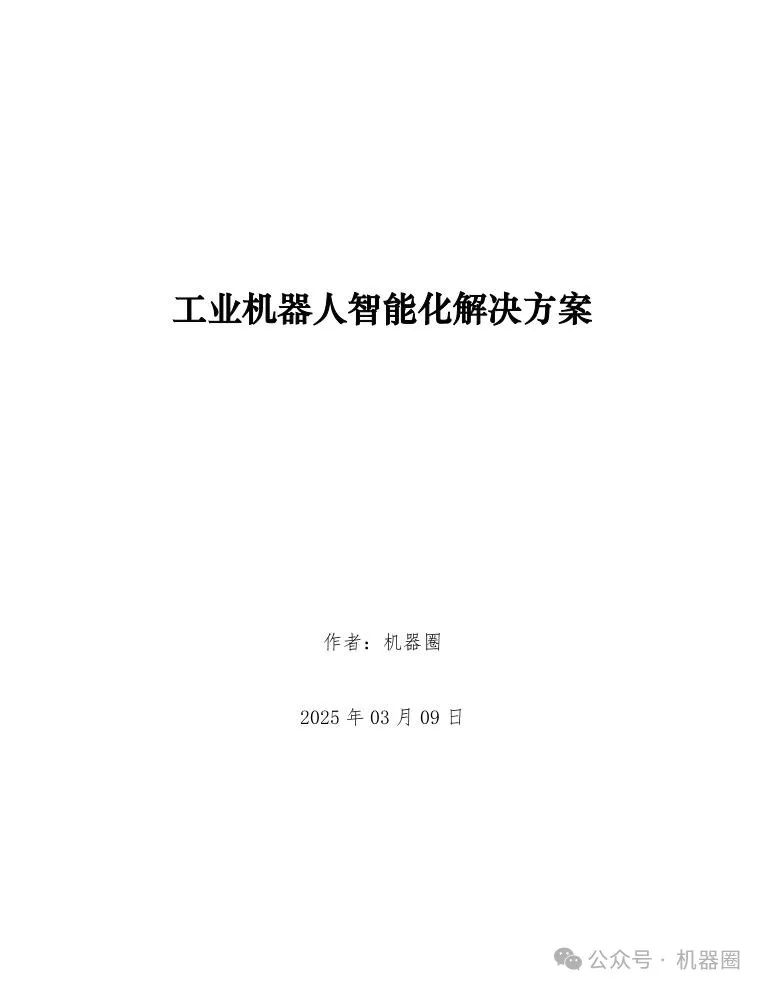
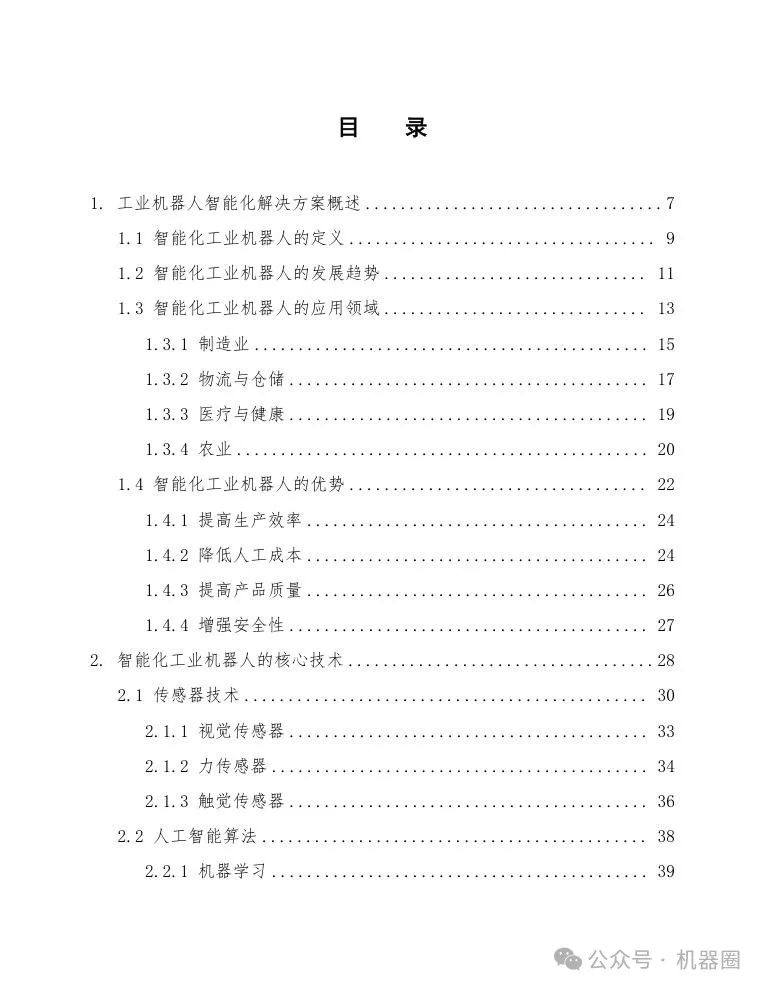
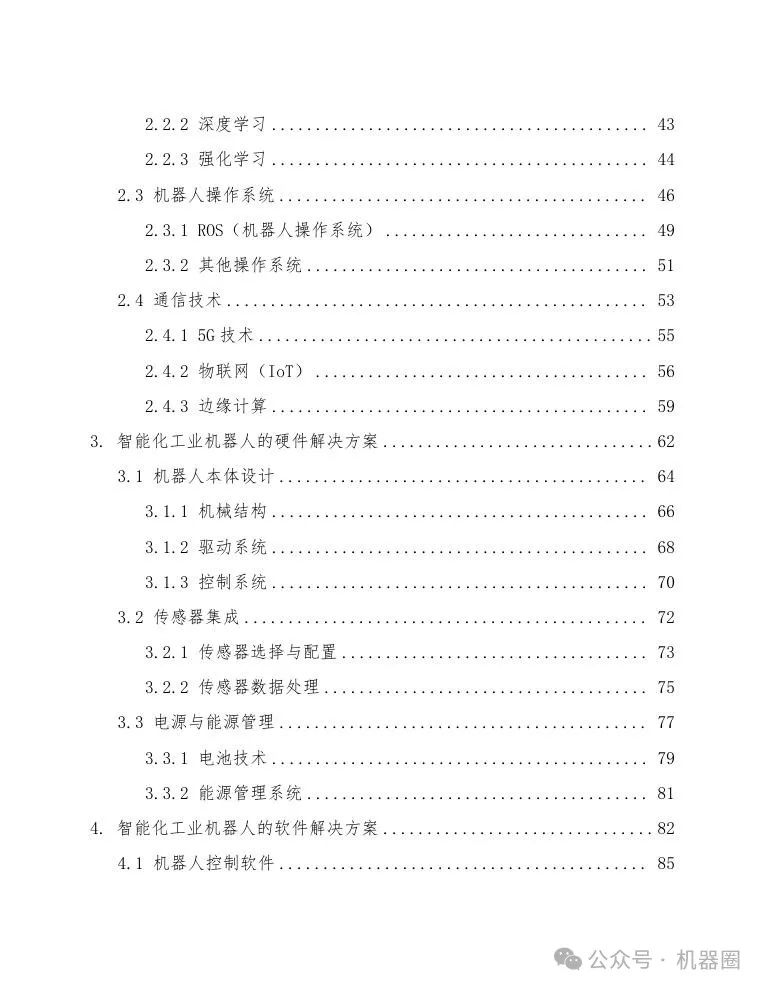
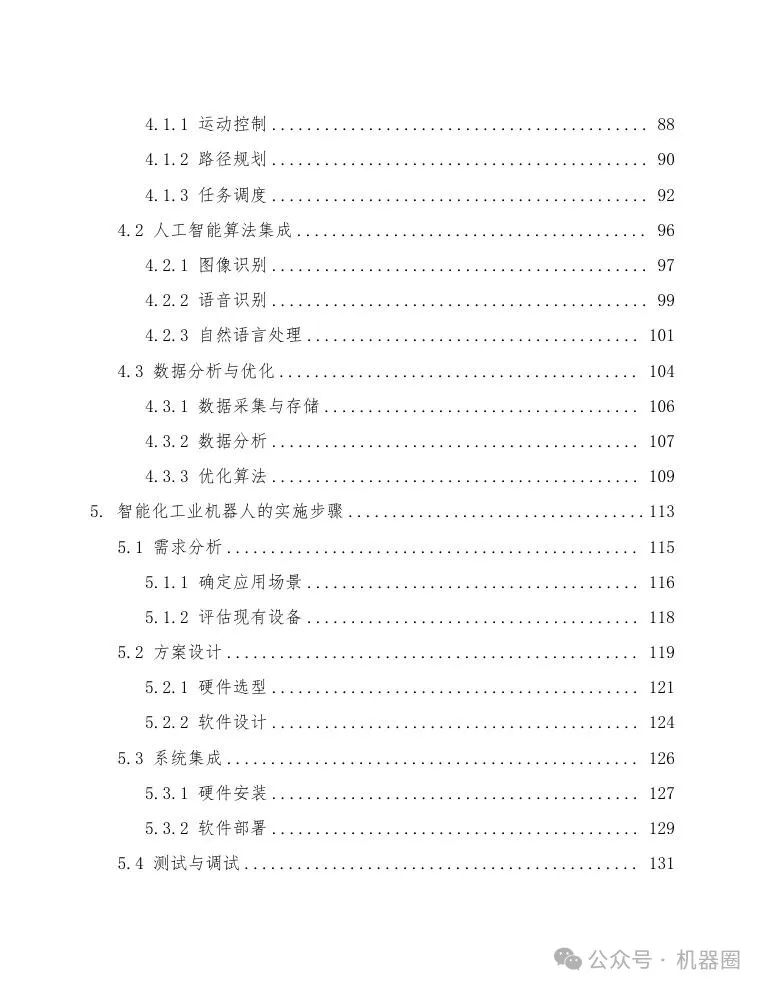
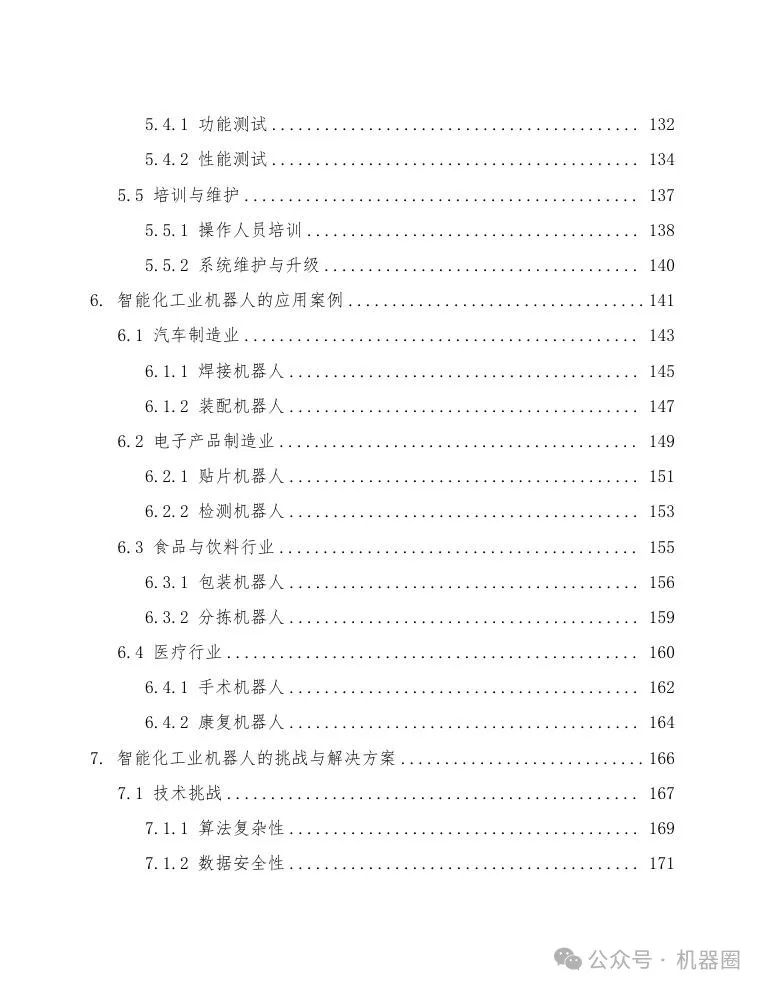
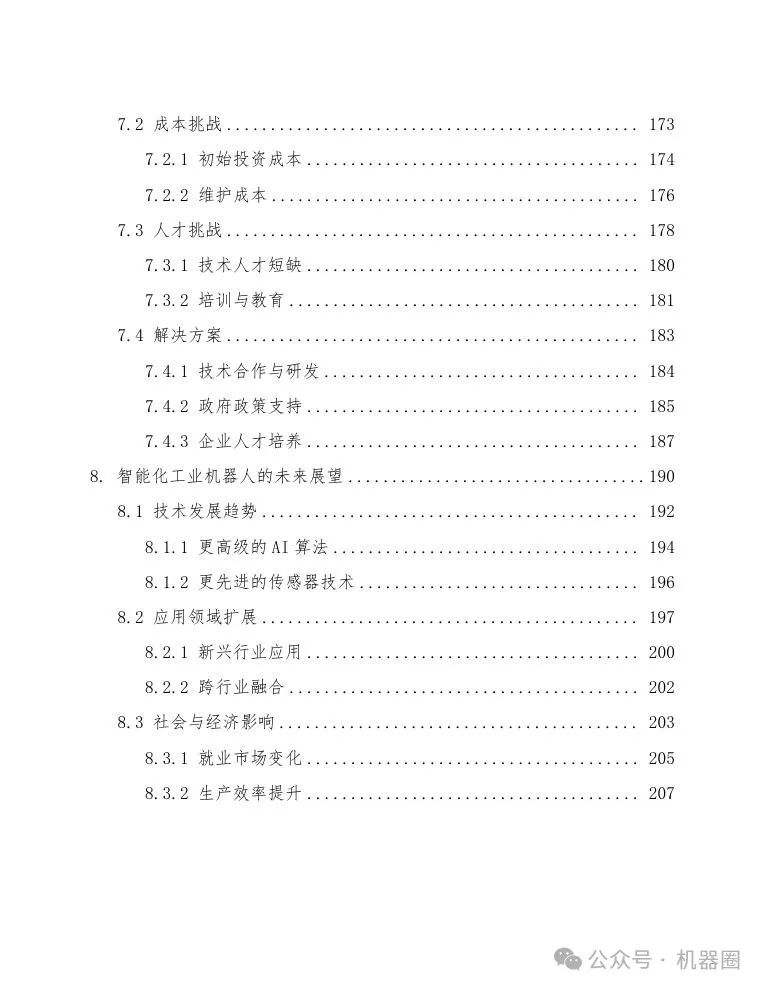
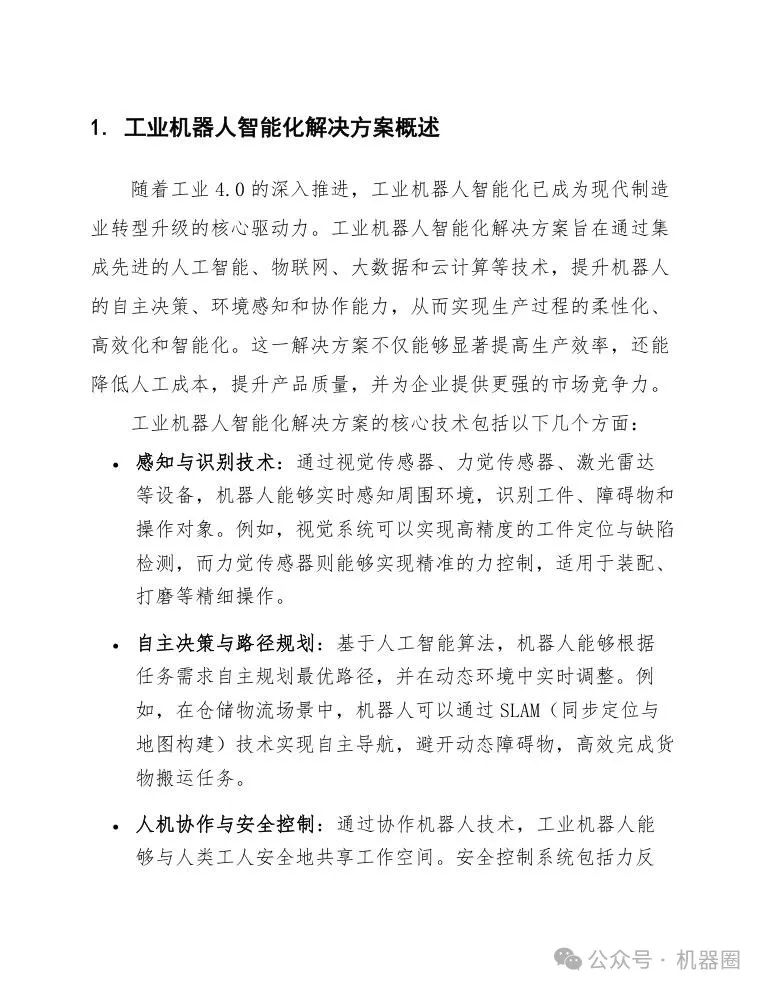
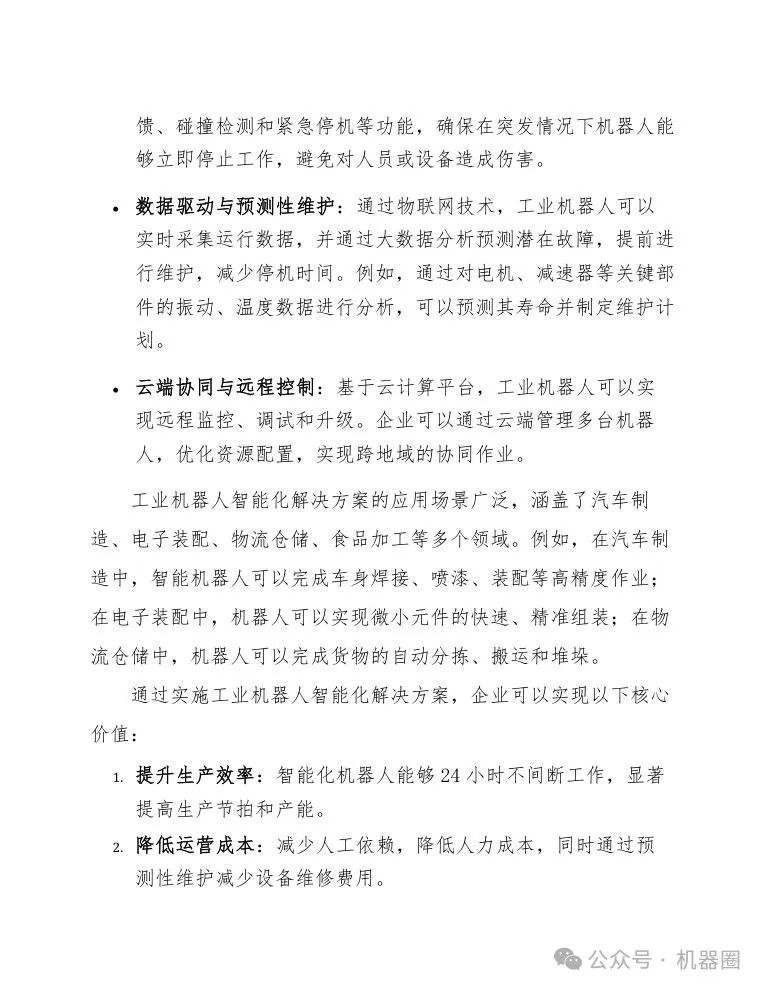
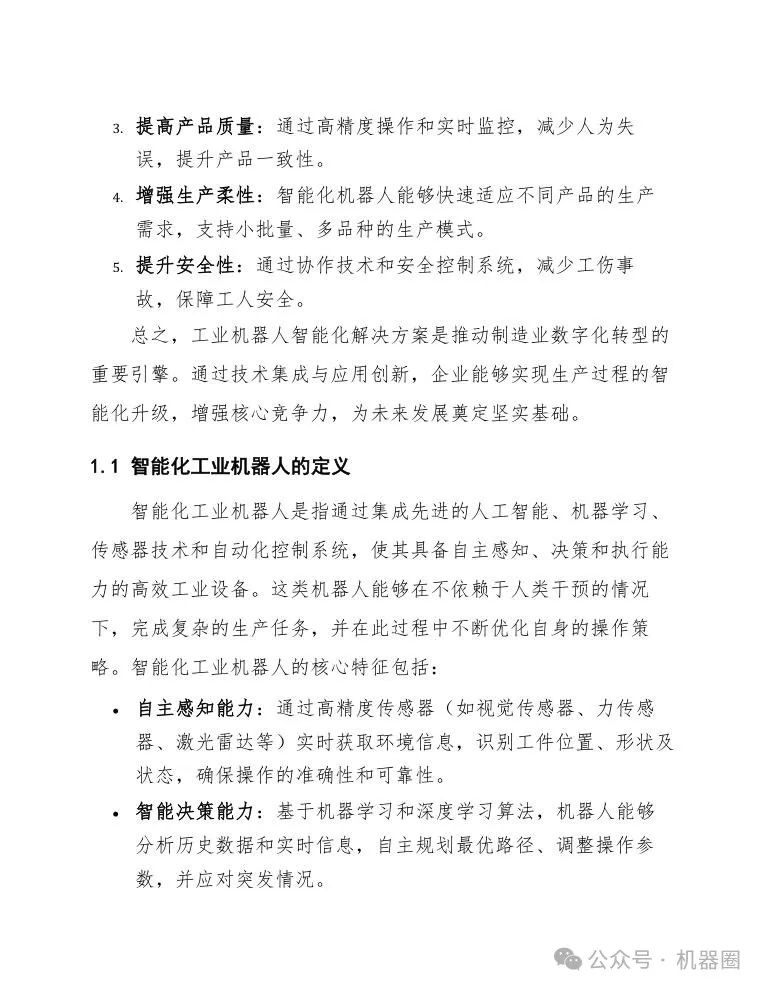
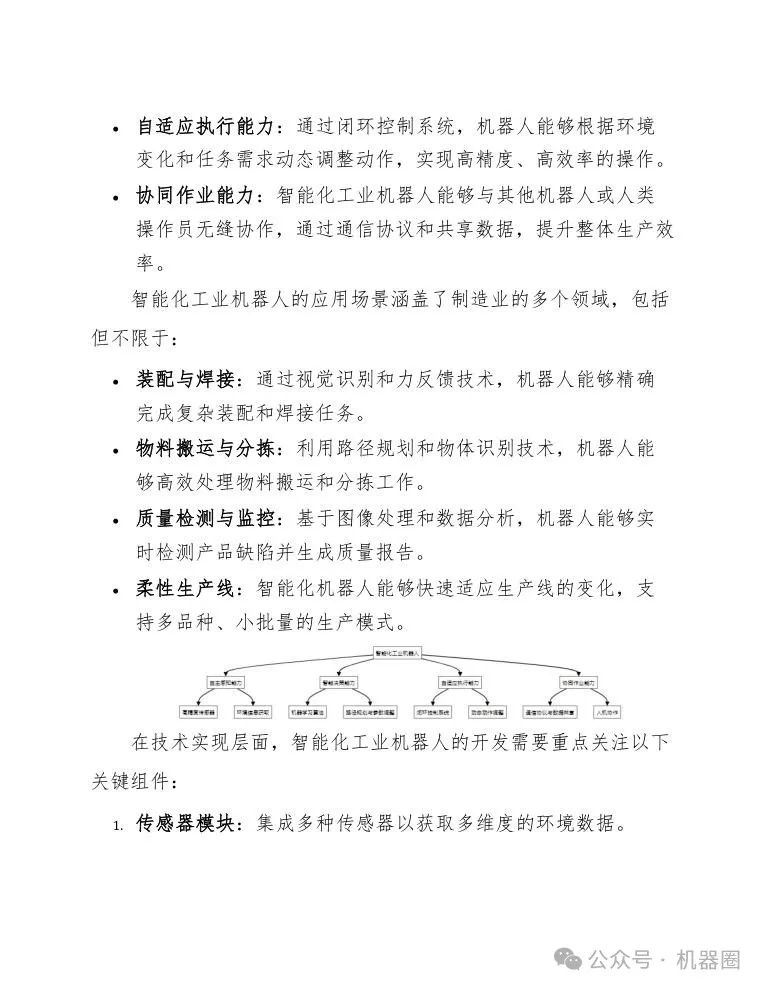
Welcome to join the Robot Circle knowledge community, where you can read and download all proposals after joining.